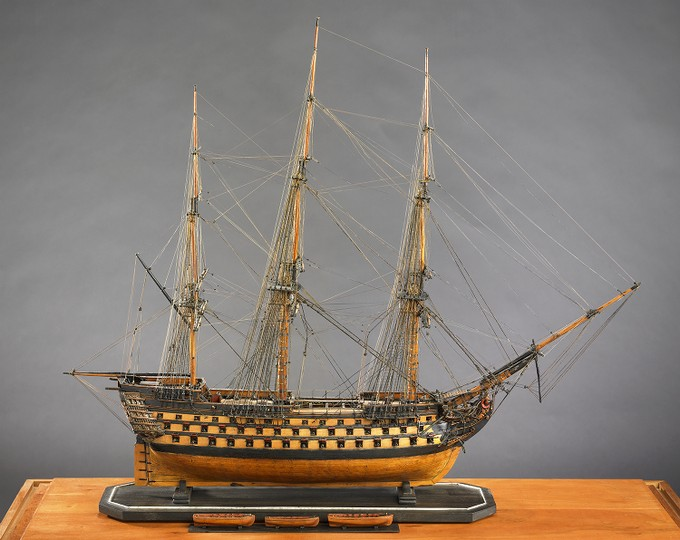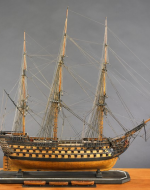Created by Ross Hutchison on Wed, 12/01/2021 - 14:28
Description:
Located at the Art Gallery of Ontario’s Thomson Collection of Ship Models, The Prisoner of War model of Victory, a British Three-decker 100 Gun Warship was created sometime between 1795 and 1815. Made out of fruitwood, brass and bone, it was created in Great Britain, presumably by French sailors. The chief mode of international travel during the Romantic era, sailing ships were crucial to narratives involving exploration, discovery and tourism. Despite the importance of ships, life at sea was dangerous and often terrifying, with travellers and seamen at great risk of malnutrition and illness caused by living conditions on ships. At this time, the only areas of the world’s oceans left uncharted were the icebound Arctic and Antarctic oceans. Coupled with the uncertainty and dangers surrounding travelling by ship, the exploration of the uncharted waters or otherwise icy landscapes was a way writers incorporated the sublime into their works, using the treachery of life at sea and the uncertainty and vastness of uncharted waters to inspire feelings of awe and fear. Some examples include Mary Shelley’s Frankenstein, Mary Wollstonecraft’s A Short Residence in Sweden, Norway and Denmark and Samuel Taylor Coleridge’s “The Rime of the Ancient Mariner.”
Copyright:
Associated Place(s)
Part of Group:
Featured in Exhibit:
Artist:
- Unknown


